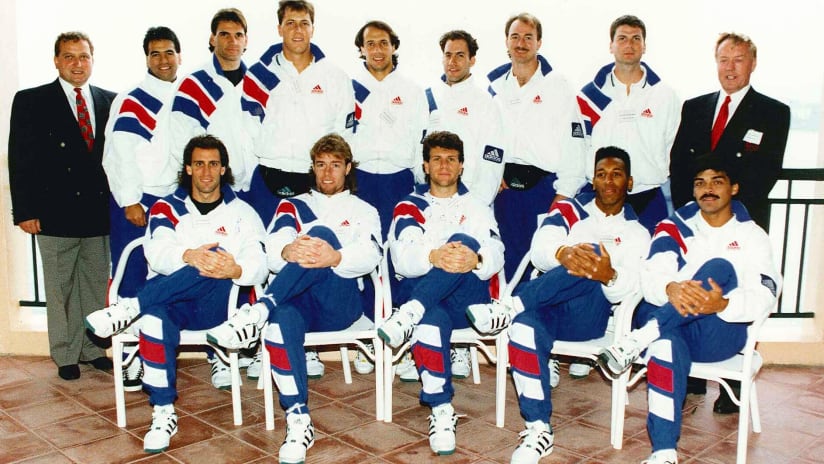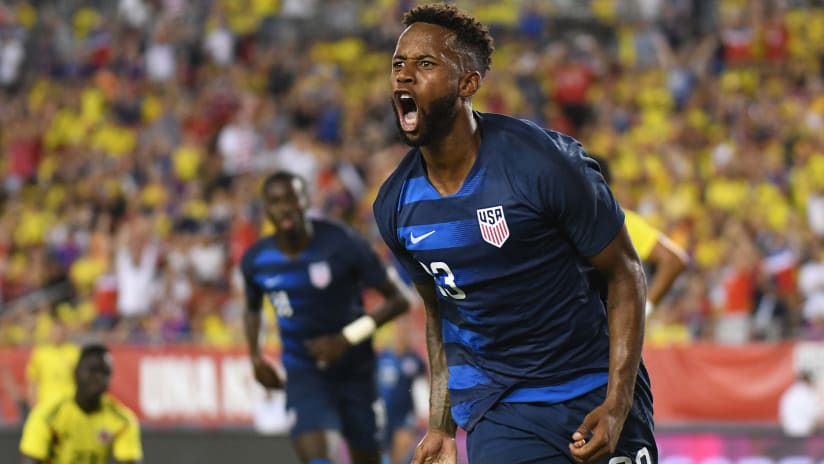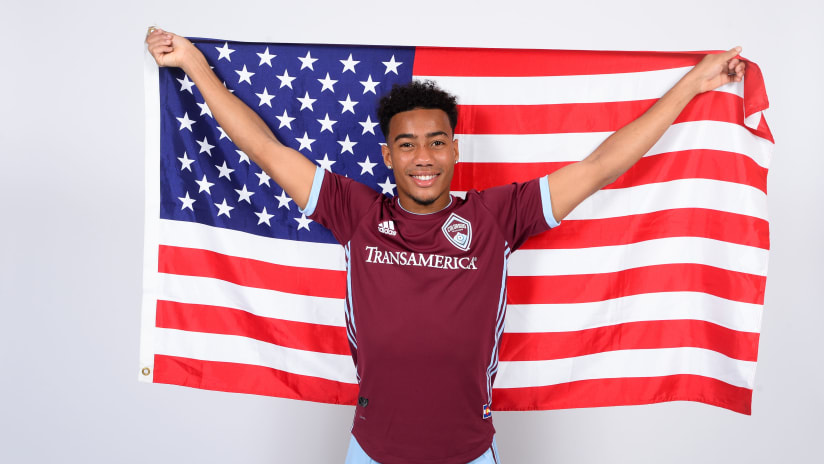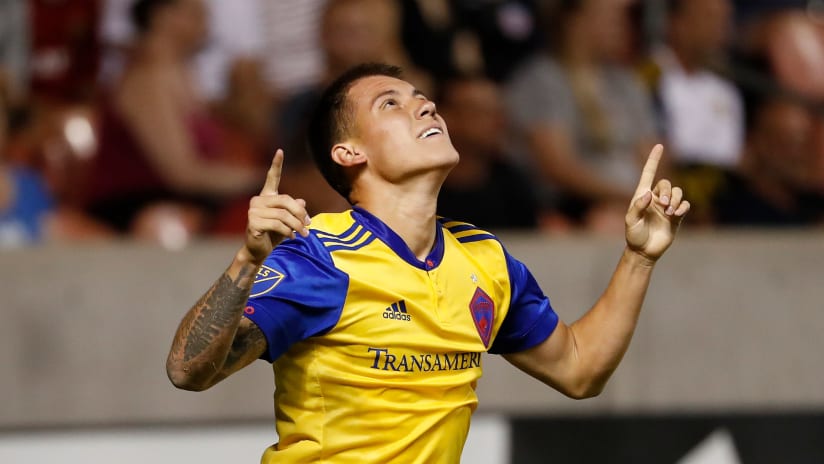Front row, left to right: Jim Gabarra (capt), Ted Eck, Jeff Agoos, Terry Woodberry, Hernan (Chico) Borja.
Back row, left to right: Coach John Kowalski, George Fernandez, Victor Nogueira, Dale Ervine, Fernando Clavijo, Andy Schmetzer, P.J. Johns, Mike Windischmann, Assistant Coach Ron Newman.
* * * * * * * * * * * * * * *
Editor’s note: The author of this article, John Polis, writes from firsthand experience as he was U.S. Soccer’s press officer with the 1992 U.S. national indoor (futsal) team in Hong Kong.
Question for Rapids fans: Do you know what was the USA’s highest-ever finish in a FIFA world championship event?
Possible answer: The USA finished fourth in the 1989 FIFA Under-20 World Championships in Saudi Arabia.
Another guess: The U.S. was in the semifinals of the first World Cup, played in Uruguay in 1930.
Both wrong. The USA’s highest finish was in futsal - at the 1992 FIFA Indoor World Championship played in Hong Kong.
Futsal comes from the original Portuguese “futebol de salão” or hall football, a game pioneered by the Brazilians. But when FIFA put together the first world championship for indoor soccer in 1989 in Holland, the USA, led by Coach John Kowalski, surprised everyone by taking the bronze medal, immediately launching the Americans onto the world indoor stage.
So when the 1992 tournament rolled around, Kowalski and Co. felt they could do well - the only question was how well against the world’s best. The Americans, with former Colorado Rapids Head Coach Fernando Clavijo on the roster, made history again by taking the silver medal, the highest ever finish by an American team in a FIFA world event.
These were the days when professional outdoor soccer opportunities were few and far between. Since 1979, indoor soccer - the kind played in hockey arenas with dasher boards - attracted most of America’s top professional players because it was the only way they could play and make a full-time living.
Kowalski, who was born in Poland, played collegiately at the University of New Haven, and later played and managed in the Major Indoor Soccer League. He coached the Pittsburgh Spirit for five years through the 1985 season and prior to that coached the Hartford Hellions following two years as a player in the league.
The Spirit were a very big deal at the time, averaging crowds of more than 10,000, outdrawing the Pittsburgh Penguins (with Mario Lemieux) of the National Hockey League, which were averaging only about 6,000. And just two hours to the north, the Cleveland Crunch, another MISL team, was packed in crowds in the neighborhood of 16,000 to 19,000.
Those in the know back then might have predicted that this team would give a good account of itself as it prepared to leave for Hong Kong. Certainly the players believed.
Dale Ervine was a first team all-American from UCLA (at the time coached by now Seattle Sounders Coach Sigi Schmid) where he led the Bruins to the 1985 national championship. That game, played in Seattle’s Kingdome, was the longest American college game in history, ending after eight overtime periods with the Bruins defeating American University, 1-0.
Collapse of NASL fuels indoor success
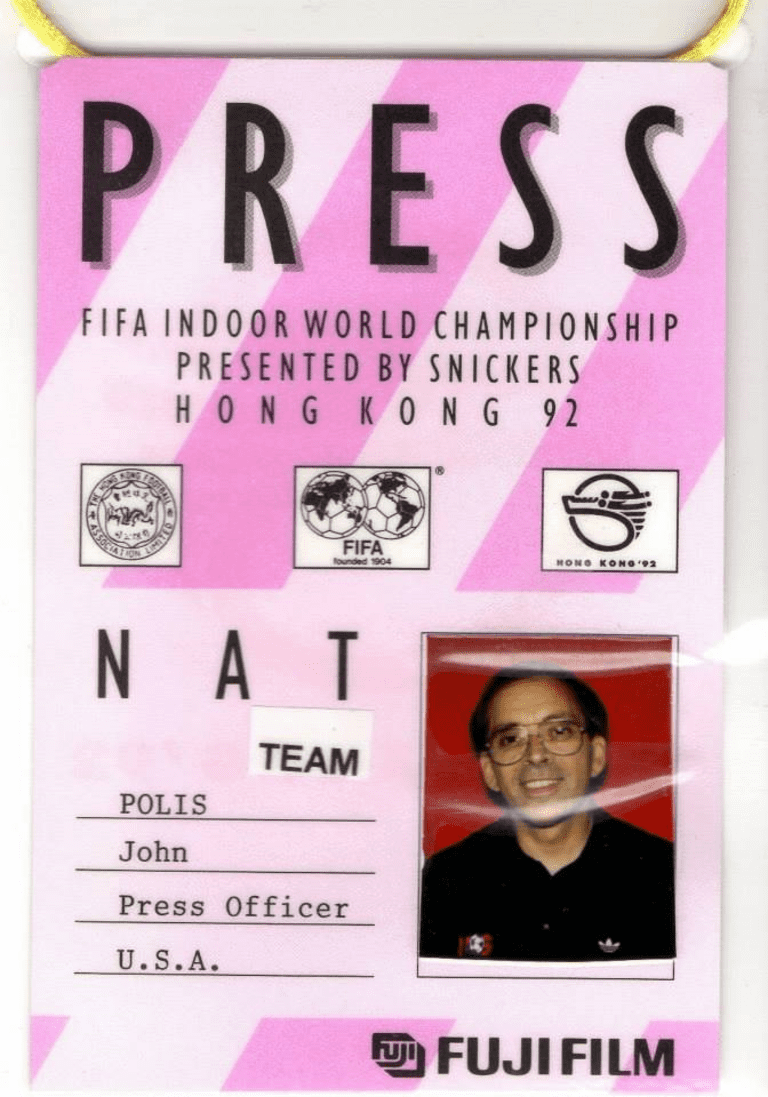
Just the year prior, the North American Soccer League collapsed and suddenly there were few avenues for future pros. Ervine signed with the old Western Soccer Alliance, but, like many players of the day, eventually found himself playing indoors. At the time of the ’92 event, he was with the Wichita Wings, where in eight years he scored 305 goals in 249 appearances (remember this is indoor soccer).
Kowalski had to do some negotiating to get all of the players released for the Hong Kong tournament. But when the dust had cleared, he had assembled a powerhouse roster of players who were brimming with confidence when they boarded the plane for Asia.
In addition to Clavijo, who had just become an American citizen and was playing for the St. Louis Storm, the squad included Ervine’s Wichita teammates, Hernan (Chico) Borja, Terry Woodberry and Ted Eck.
In goal was the great Victor Nogueira, who was born in Mozambique and played six years in the North American Soccer League (outdoor) but eventually logged 20 seasons in three indoor leagues. There was defender Mike Windischmann who had captained the USA in the 1990 World Cup in Italy, and other notables like team captain Jim Gabarra and Jeff Agoos (both U.S. internationals), plus Cleveland’s George Fernandez and Andy Schmetzer.
To make the team even stronger on the technical side, Kowalski brought in longtime indoor coach Ron Newman, who had already won many indoor championships with the San Diego Sockers.
“We had good experience from the first world indoor championship,” said Kowalski. “And going into the second one we had played in some good tournaments. So we felt we were ready to improve.”
Determined to win
Ervine said the attitude with this particular group was that they were not just going over there “to see how we do. It was more like we were going over with a purpose - to win.”
The Americans got right down to business in their Group D matches against Spain, Russia and the People’s Republic of China. They turned heads by blasting Russia, one of the tournament favorites, 8-3 in their opening game. The second game was a loss to another tournament favorite, Spain, 5-3, but the Yanks came back in their third group match, beating China 7-1.
Borja, who as a youngster had played with the New York Cosmos, says the team shocked many European observers there. “When we got to Hong Kong, they had no idea what the Americans could do. They thought we were the outdoor team, but it was the furthest thing from the truth. We were a talented group and we felt we could win.”
Borja and Ervine, who were used to terrorizing opposing defenses in the United States, picked right up in Hong Kong. Borja, the skillful one did all the maneuvering while Ervine roamed between the posts.
Familiarity creates goals
“We were very familiar with one another and, really, I knew where I stood,” says Ervine. “Chico had the imagination and the skill and vision. I would hold the ball up and try and find him. I knew if I got open, the ball was coming back to me, so it was exciting for me to give up the ball and let him do the work. We had a good relationship off the field as well. There was a respect in each other and confidence in each other.”
Borja tells the story about Ervine, who originally was an indoor defender. “I think he looked good in practice and we needed help up front so we put him there and he was a great finisher,” Borja says. “There was a mutual respect between us, but it was about knowing your role.
“You cannot teach finishing. You might challenge Giorgio Chinaglia to a dribbling contest and you would beat him, but if you try to out-finish him, he will kill you. It’s something you cannot teach. We used to score on a lot of free kicks. I would get the ball to him with no-look passes. We had great timing. We knew each other’s moves before it would even happen and defenders had no chance.”
Says Kowalski: “Chico and Dale had this little saying between them. “It was ‘meet you at the far post.’”
In the tournament’s second stage, the USA drew 2-2 with the eventual champion, Brazil, then drew with The Netherlands 3-3 before defeating Argentina 6-3 to earn a spot in the semifinals and putting the USA into the world indoor “final four” for the second time in a row.
The Americans faced highly skilled Iran in one semifinal and pulled out a 4-2 victory to put them in the final. Meanwhile Brazil defeated Spain 4-1 to move into the championship decider.
Yellow cards bench Ervine for final
It was just what the United States wanted - another crack at the team they drew with earlier in the tournament. But the Americans were forced to play without Ervine, who picked up his second yellow card in the semifinals and Woodberry, who earlier was taken to the hospital after being struck in the eye by a ball.
Brazil, perhaps somewhat unnerved by the earlier result, came out playing defensively. At halftime it was 1-0 Brazil, but the Americans could only score one goal in the second half and the championship game ended, 4-1 for Brazil.
Kowalski, whose team pioneered substitution “on the fly” in the ’89 tournament in Holland, brought that same creativity to its tactical approach in Hong Kong. He and Newman cooly and calmly guided the team through the preliminary and second stages of the competition.
“They (Kowalski and Newman) had just the right demeanor for a bunch of established players,” says Ervine. “They had been around professional players and they gave us just enough direction and we took it from there.”
Borja, Nogueira, Ervine win individual honors
Ervine tied for fifth leading scorer in the tournament with seven goals in nine games. Borja scored six goals in seven games. Borja and USA goalkeeper Nogueira were named to the “World Top Five” at the end of the tournament.
Kowalski, who currently coaches the women’s team at Robert Morris University, as well as the Ft. Pitt Regiment men’s team in the National Professional Soccer League during the summer, said the entire indoor experience could not have been possible without strong support from the U.S. Federation. “Sunil Gulati’s help on an administrative and budgeting level was instrumental in making it all possible. (Gulati is now president of the U.S. Soccer Federation).
“Everyone contributed - our players, the coaching staff and there was also our support staff: team physicians Dr. Stan Bushkoff and Dr. Bill Heinz, our athletic trainer, Patty Marchak, our press officer, John Polis, our team administrator, Jeff Rohrman, and our kit man, Mike Konsak. The camaraderie among everyone was fantastic.”
Borja says the entire experience had special meaning for all the players.
“We knew that we were the best players chosen by two amazing coaches and we were very proud to wear the red, white and blue. For me, when we came back with the silver it was one of the greatest things that happened in my career.”
Ervine tells the story of when the team came out of the locker room for the first game against Russia.
“You knew this was a special group because of their abilities,” he says. “Prior to our first game, I told the guys that there were many U.S. teams who played in tournaments and have looked back and wished that they had done this or that. I said ‘let’s not look back and have any regrets.’ That team did not.”

